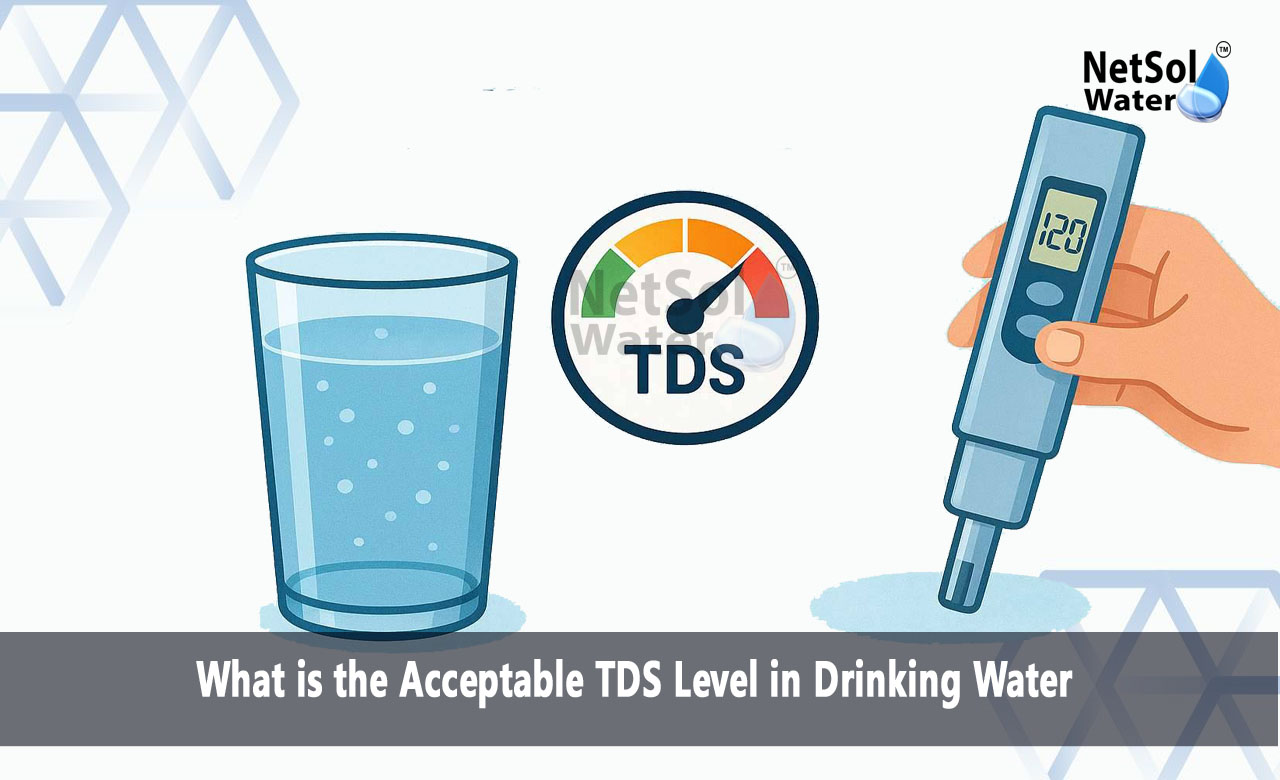What is the Acceptable TDS Level in Drinking Water?
Total dissolved solids set a key standard for water quality and health. When people ask what is the acceptable TDS level in drinking water they seek clear guidance on safe levels. TDS measures the amount of minerals, chemicals and other substances in a water sample. High TDS can affect taste and may pose health risks over time. Low TDS may leave water flat and lacking essential minerals. Understanding the balance helps families choose treatments that suit their needs.
Health Impacts of TDS in Water
The health impacts of TDS in water matter to every user.
Low TDS and Contamination Risk
Water with very low TDS can taste flat and it may lack essential minerals. This lack can indicate that filtration removed beneficial ions as well as pollutants. That absence might raise risk because soft water may leach metals from pipes or lack calcium and magnesium. That leads to potential mineral deficiency if used long term.
High TDS and Mineral Content
Water with high TDS may carry excess salts such as sodium, chloride and sulfates. That salty content can harm people with high blood pressure or kidney issues. Some hardness minerals may build scale in plumbing and reduce water heater efficiency. That excess may also alter beverage and food flavour.
Balance and Taste
A balanced TDS brings a mild mineral taste and supports hydration. Many users sense pleasant mouth feel at moderate levels. That balance often lies between low and high extremes for wellbeing and sensory appeal.
International and National Standards for Acceptable TDS
The world and local authorities define what is the acceptable TDS level in drinking water in different ranges. .
World Health Organization Guideline
The WHO sets a guideline limit though it does not state a hard maximum. It notes that a TDS level below 300 mg/L tastes excellent and 300 to 600 mg/L tastes good. It also remarks that 600 to 900 may still be acceptable while levels above 1200 mg/L may prove unpalatable for many.
US EPA Recommendation
The US Environmental Protection Agency does not enforce a legal maximum for TDS. It generally regards 500 mg/L as a secondary standard that affects taste clarity and consumer preference. That value serves as a benchmark in many US states.
Indian Standard by BIS
The Bureau of Indian Standards recommends 500 mg/L as upper desirable limit and 2000 mg/L as maximum permissible limit. That range reflects climate and local conditions and water uses across India. That standard helps water suppliers and regulators manage quality.
Natural and Human Sources of TDS
Understanding what is the acceptable TDS level in drinking water requires knowing why total dissolved solids appear in water.
Ground Rock and Soil
Rain percolates through rock, soil, sand and sediments. That process dissolves ions like calcium, magnesium, sodium, potassium and bicarbonate. That natural contribution varies by geology region and influences baseline TDS level.
Industrial Effluents and Waste Water
Factories and treatment plants may discharge water that contains salts, nitrates, phosphates and metals. That effluent enters rivers, lakes and wells. That contamination can raise TDS beyond natural levels near industrial zones.
Agriculture Runoff Impact
Fertilizer runoff, pesticide residues and soil erosion deliver nitrates and soluble salts into water bodies. That runoff often peaks after rainfall or irrigation. That surge can raise TDS suddenly in local wells and surface water used for drinking.
Measurement Methods of TDS
Conductivity Measurement
Conductivity meters estimate TDS quickly by measuring electric current flow in water. That method uses a conversion factor from conductivity units (µS/cm) to approximate TDS in mg/L. That meter gives fast feedback at point of use.
Gravimetric Oven Method
A lab may use the gravimetric approach. That requires filtering a known volume of water, evaporating the sample and weighing the residue. That procedure yields precise TDS values but takes hours and needs controlled conditions.
Digital TDS Meters
Digital handheld TDS meters offer portable testing. That device contains sensors that output direct TDS reading without conversion. That tool suits home monitoring and field sampling when users want immediate results.
Strategies to Control or Reduce TDS in Drinking Water
Knowing what is the acceptable TDS level in drinking water guides treatment choices.
Reverse Osmosis Process
Reverse osmosis forces water through a semi permeable membrane. That barrier blocks most dissolved salts and yields low TDS output. That system can lower TDS to under 50 mg/L. That purity may lack minerals but suits users needing strict limits.
Distillation and Ion Exchange
Distillation boils water and condenses the steam leaving mineral content behind. Ion exchange systems swap harmful ions with benign ones. That hybrid approach helps produce water with controlled TDS and improved taste.
Use of Activated Carbon and Blending
Activated carbon does not remove TDS directly. It reduces organic compounds and chlorine. Users may blend high TDS water with low TDS sources to reach acceptable range. That simple step helps match the acceptable TDS level in drinking water without full scale treatment.
Conclusion
Choosing the right acceptable TDS level in drinking water matters for health, comfort and taste. Many organizations set 500 mg/L as a general guideline though taste may vary by region and individual preference. Water users should measure dissolved solids regularly and apply suitable treatment if levels exceed range. Keeping TDS within safe levels supports good hydration and protects plumbing and appliances.
Contact Netsol Water at:
Phone: +91-9650608473, Email: enquiry@netsolwater.com



